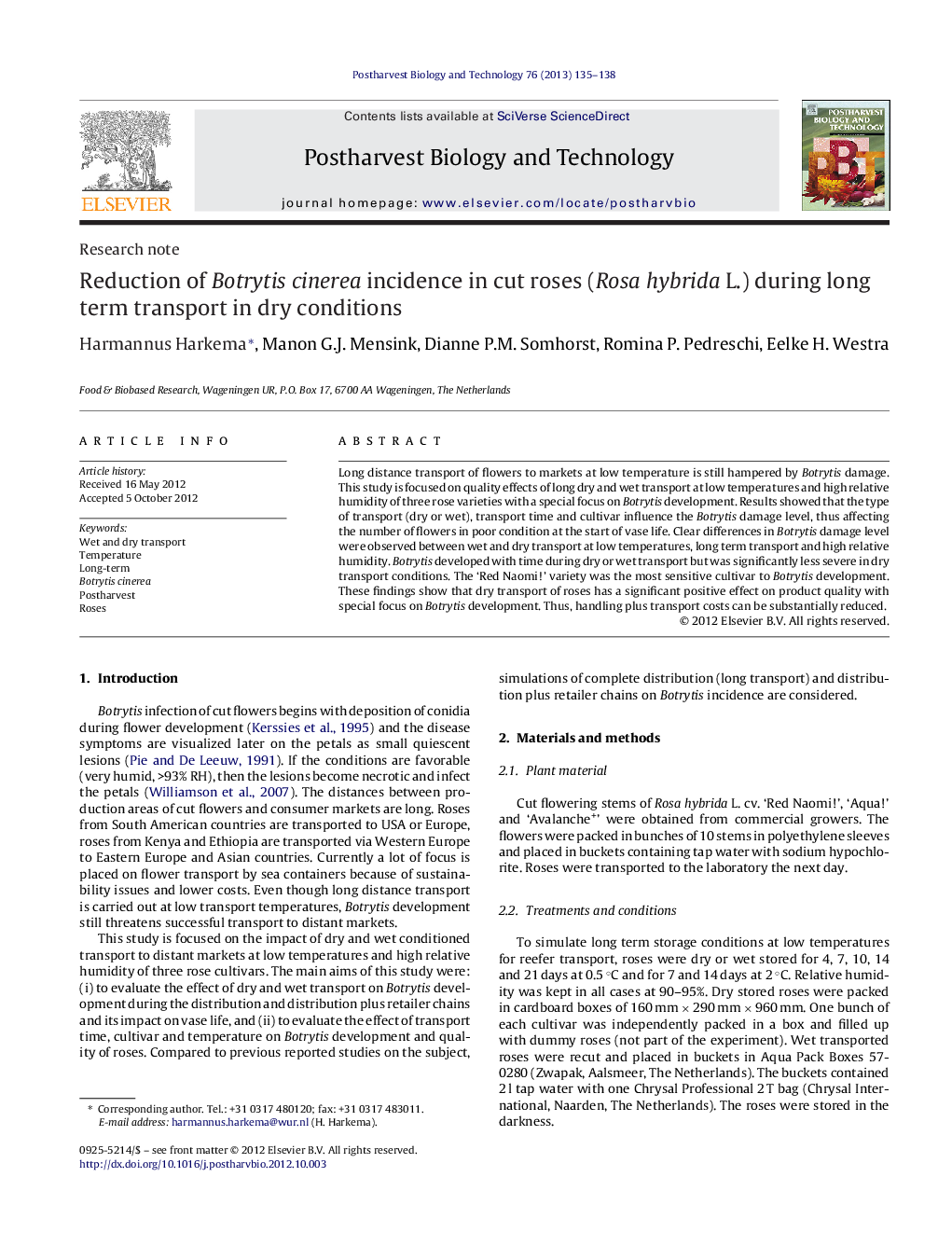| Article ID | Journal | Published Year | Pages | File Type |
|---|---|---|---|---|
| 4518610 | Postharvest Biology and Technology | 2013 | 4 Pages |
Long distance transport of flowers to markets at low temperature is still hampered by Botrytis damage. This study is focused on quality effects of long dry and wet transport at low temperatures and high relative humidity of three rose varieties with a special focus on Botrytis development. Results showed that the type of transport (dry or wet), transport time and cultivar influence the Botrytis damage level, thus affecting the number of flowers in poor condition at the start of vase life. Clear differences in Botrytis damage level were observed between wet and dry transport at low temperatures, long term transport and high relative humidity. Botrytis developed with time during dry or wet transport but was significantly less severe in dry transport conditions. The ‘Red Naomi!’ variety was the most sensitive cultivar to Botrytis development. These findings show that dry transport of roses has a significant positive effect on product quality with special focus on Botrytis development. Thus, handling plus transport costs can be substantially reduced.
► Botrytis development in cut roses is time dependent but less severe with dry transport. ► The extent of Botrytis development depends on rose variety, time and temperature. ► The hotbox test is a good indicator for Botrytis susceptibility. ► Red Naomi is the most sensitive rose cultivar to Botrytis.
